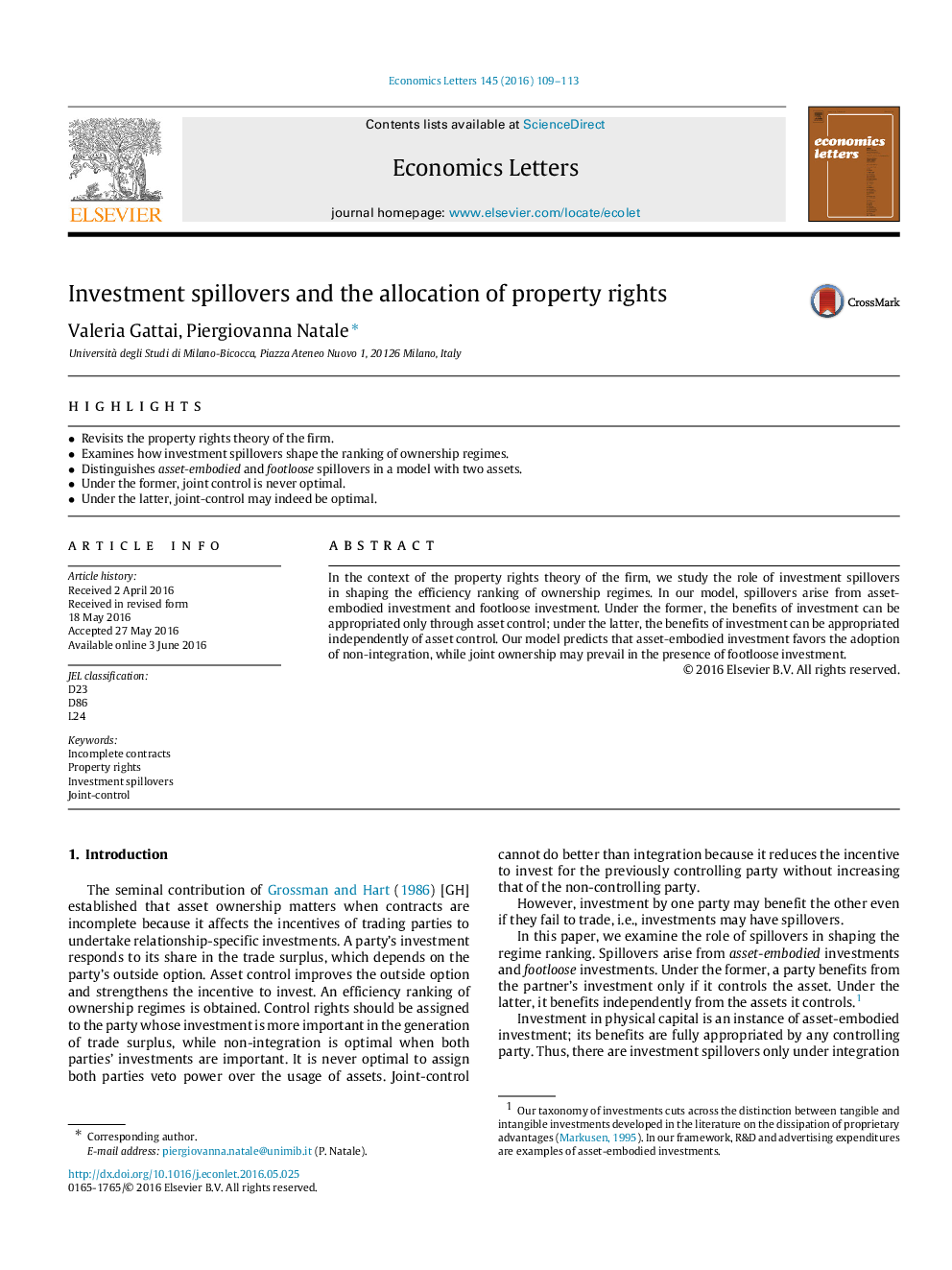| Article ID | Journal | Published Year | Pages | File Type |
|---|---|---|---|---|
| 5058199 | Economics Letters | 2016 | 5 Pages |
â¢Revisits the property rights theory of the firm.â¢Examines how investment spillovers shape the ranking of ownership regimes.â¢Distinguishes asset-embodied and footloose spillovers in a model with two assets.â¢Under the former, joint control is never optimal.â¢Under the latter, joint-control may indeed be optimal.
In the context of the property rights theory of the firm, we study the role of investment spillovers in shaping the efficiency ranking of ownership regimes. In our model, spillovers arise from asset-embodied investment and footloose investment. Under the former, the benefits of investment can be appropriated only through asset control; under the latter, the benefits of investment can be appropriated independently of asset control. Our model predicts that asset-embodied investment favors the adoption of non-integration, while joint ownership may prevail in the presence of footloose investment.
